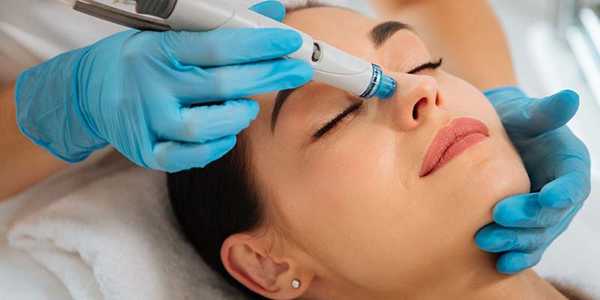税理士相談なら安心・信頼の専門家にお任せ
Thyroid Eye Disease: A Comprehensive Guide to Symptoms and Treatment
Thyroid Eye Disease (TED) is a serious condition that affects the eyes, commonly linked to thyroid dysfunctions such as Graves' disease. Early recognition and proper management are essential to prevent worsening symptoms and preserve vision. This guide discusses TED’s symptoms, risk factors, and available treatment options to help individuals better understand how to address the disease effectively.
Thyroid Eye Disease (TED) is a serious condition that affects the eyes, commonly linked to thyroid dysfunctions such as Graves' disease. Early recognition and proper management are essential to prevent worsening symptoms and preserve vision. This guide discusses TED’s symptoms, risk factors, and available treatment options to help individuals better understand how to address the disease effectively.

What is Thyroid Eye Disease?
TED, also known as Graves' orbitopathy or thyroid-associated orbitopathy, is an autoimmune condition in which the immune system mistakenly attacks the tissues around the eyes. This leads to inflammation, swelling, and sometimes significant changes in appearance. TED is most frequently seen in individuals with Graves' disease, an autoimmune thyroid disorder that causes hyperthyroidism, but it can also occur in people with hypothyroidism or even normal thyroid levels.
Early Symptoms of Thyroid Eye Disease
The early stages of TED may present mild symptoms that could easily be mistaken for other conditions. However, identifying these symptoms early can lead to better outcomes with proper treatment.
• Puffy Eyelids: Swelling around the eyelids, especially upon waking up.
• Dry or Gritty Eyes: A sensation of dryness or irritation, often confused with allergies or dry eye syndrome.
• Light Sensitivity: Discomfort in bright light or sunlight.
• Excessive Tearing: Watery eyes due to irritation.
• Pressure Behind the Eyes: A feeling of fullness or discomfort behind the eyes, often mistaken for fatigue.
If these symptoms persist, it’s important to consult with a healthcare professional to monitor the progression of TED.
Progression of Thyroid Eye Disease
As TED advances, symptoms can become more noticeable and troubling. These include:
• Bulging Eyes (Proptosis): Caused by inflammation and pressure within the eye socket, leading to the eyes protruding.
• Eyelid Retraction: The eyelids may pull back, giving the eyes a wide, staring look.
• Swelling and Redness: Persistent redness and swelling around the eyes.
• Double Vision (Diplopia): Inflammation in the eye muscles can cause misalignment, leading to double vision.
• Eye Pain and Difficulty Moving the Eyes: Inflammation may make it painful to move the eyes or lead to limited eye movement.
Severe Symptoms of TED That Require Immediate Care
In advanced cases of TED, untreated symptoms can lead to serious complications. Seek urgent medical attention if you experience:
• Sudden or Worsening Double Vision
• Blurred Vision or Vision Loss
• Severe Eye Pain
• Inability to Close Eyes Fully: This can lead to dryness and risk of corneal damage.
• Loss of Peripheral Vision or Altered Color Perception
These may indicate optic nerve compression, a serious condition that can lead to permanent vision loss.
Risk Factors and Causes of Thyroid Eye Disease
While TED’s exact cause is not fully understood, several factors can increase the risk of developing this condition:
• Thyroid Disorders: TED is most commonly associated with Graves' disease but can also occur with hypothyroidism or normal thyroid function.
• Smoking: Smoking significantly worsens TED and is a known risk factor for both developing and exacerbating the condition.
• Family History: A genetic predisposition to autoimmune diseases may increase the likelihood of developing TED.
• Gender and Age: TED is more common in women, particularly those aged 40-60, but men may experience more severe forms of the disease.
• Radioactive Iodine Therapy: Individuals who undergo radioactive iodine treatment for hyperthyroidism may experience worsening of TED symptoms.
Treatment Options for Thyroid Eye Disease
Treatment for TED depends on the severity of the disease and whether it is in an active or stable phase. Options include:
1. Mild TED Management
• Lubricating Eye Drops: To alleviate dryness and irritation.
• Sunglasses: To protect against light sensitivity.
• Elevated Pillow: To reduce eye puffiness at night.
• Thyroid Function Monitoring: Keeping thyroid hormone levels stable helps prevent TED progression.
2. Medical Treatments for Moderate to Severe TED
• Corticosteroids: Reduce inflammation in the eyes.
• Tepezza (Teprotumumab): FDA-approved to treat moderate to severe TED by reducing eye bulging.
• Radiation Therapy: May be used to reduce swelling in the eye muscles.
3. Surgical Interventions
• Orbital Decompression Surgery: Corrects bulging eyes by expanding the eye socket.
• Strabismus Surgery: Aligns eye muscles to address double vision.
• Eyelid Surgery: Improves eyelid closure to prevent dryness and protect the eyes.
Preventing Thyroid Eye Disease
While TED cannot always be prevented, taking steps to reduce the risk and manage thyroid health can make a significant difference:
• Stop Smoking: The most effective way to prevent TED worsening.
• Monitor Thyroid Function: Regular thyroid tests can help detect imbalances early.
• Protect Your Eyes: Use lubricating drops, sunglasses, and avoid screen fatigue.
• Stay Educated: Discuss early screening and prevention with your doctor.
Conclusion
Thyroid Eye Disease is a serious condition that can significantly affect vision and quality of life. However, early detection and timely treatment can help prevent complications and preserve eye health. Regular monitoring, lifestyle adjustments, and appropriate therapies are essential for managing TED effectively. If you notice symptoms of TED, consult with a healthcare professional as soon as possible to begin treatment and protect your vision.











